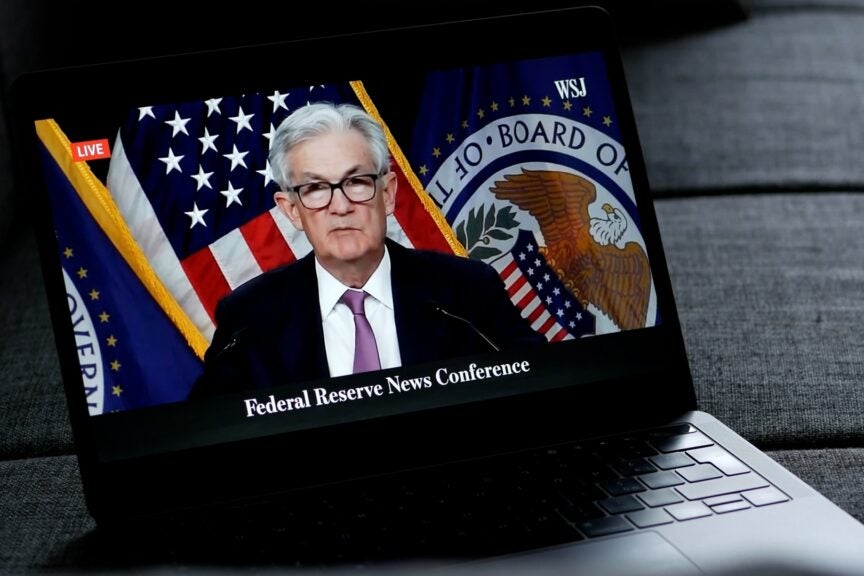PIMCO’s Chief Sees 30-35% Chance of US Recession: A Critical Insight for Investors
In a landscape marked by constant economic fluctuations, PIMCO’s chief economist recently made headlines by asserting that there’s a 30-35% likelihood of a recession in the United States. This projection is significant and raises pertinent questions for investors who are navigating a complex financial climate. While the fears of stagflation—a term denoting stagnant growth coupled with inflation—are downplayed by PIMCO’s chief, understanding the current economic indicators is crucial for making informed investment decisions.
Understanding the Economic Landscape
The U.S. economy, which has been recovering from the disruptions caused by the COVID-19 pandemic, is now at a crossroads. Various factors contribute to the uncertainty surrounding its future, including inflation rates, consumer spending, and interest rate adjustments by the Federal Reserve. Let’s delve into these components to provide a clearer picture of what the 30-35% recession risk signifies for investors.
1. Inflation and Interest Rates
Inflation has been a hot topic over the last few years, with rates soaring to levels not seen in decades. The Federal Reserve has responded by raising interest rates in an attempt to control inflation. While higher interest rates can help curb inflation, they also increase borrowing costs, potentially slowing down consumer spending and business investments.
- Impact on Borrowing: Higher interest rates can lead to decreased consumer borrowing, which in turn can slow economic growth.
- Consumer Confidence: Rising inflation can erode consumer confidence, making people hesitant to spend, further dampening economic activity.
2. Consumer Spending and Economic Growth
Consumer spending is a critical driver of the U.S. economy, accounting for a significant portion of economic activity. If consumers tighten their belts due to inflation and uncertainty, it could result in lower demand for goods and services, which would impact businesses and potentially lead to a recession.
In light of PIMCO’s projections, one must analyze how this consumer behavior could affect major stock indices like the Invesco QQQ Trust and the SPDR S&P 500.
3. Major Stock Indices and Recession Risk
The Invesco QQQ Trust, which tracks the performance of the Nasdaq-100 Index, is heavily weighted towards technology companies. These firms often experience volatility in response to economic changes. A recession could lead to reduced corporate profits, particularly in growth sectors like technology.
Conversely, the SPDR S&P 500 encompasses a broader range of industries, which may provide some insulation against sector-specific downturns. However, if a recession does ensue, investors might see a decline in stock values across the board.
What Does a 30-35% Chance of Recession Mean for Investors?
For investors, a 30-35% chance of a recession is a significant consideration. Here’s how this risk can affect investment strategies:
- Diversification: Investors may want to diversify their portfolios to mitigate risks associated with economic downturns. This could involve holding a mix of stocks, bonds, and alternative investments.
- Focus on Defensive Stocks: Companies in sectors such as utilities, healthcare, and consumer staples tend to perform better during economic downturns. Investors might pivot towards these more stable investments.
- Stay Informed: Keeping abreast of economic indicators and Federal Reserve announcements can provide insights into potential market movements.
Addressing Stagflation Concerns
While PIMCO’s chief economist has downplayed the threat of stagflation, it’s essential to understand why this economic scenario is a concern for many. Stagflation occurs when inflation remains high while economic growth stagnates, leading to a challenging environment for policymakers. However, the current economic indicators suggest that while inflation is a problem, growth is still occurring, albeit at a slower pace.
Here are some key aspects that differentiate the current situation from a stagflation scenario:
- Labor Market Resilience: The U.S. labor market has shown resilience, with low unemployment rates indicating that many people are still employed and earning wages, which supports consumer spending.
- Corporate Earnings: Many companies continue to report healthy earnings, which is a positive sign for economic growth.
Strategic Investment Approaches
Given the potential for recession, investors should consider adopting strategic approaches to safeguard their portfolios. Here are a few strategies to consider:
- Value Investing: Focusing on undervalued stocks that have strong fundamentals can be a prudent strategy during economic uncertainty.
- Dividend Stocks: Companies that consistently pay dividends can provide a steady income stream, which may be particularly valuable in a volatile market.
- Alternative Investments: Exploring options such as real estate or commodities might help diversify risk and provide a hedge against inflation.
Conclusion: Navigating Uncertainty with Confidence
While PIMCO’s chief economist’s projection of a 30-35% chance of a U.S. recession may raise eyebrows among investors, it’s essential to approach this information with a balanced perspective. Understanding the broader economic landscape, including inflation, consumer spending, and interest rates, can empower investors to make informed decisions.
By diversifying portfolios, focusing on defensive investments, and staying informed about economic indicators, investors can navigate the uncertainties of the market with confidence. It’s not just about weathering potential downturns; it’s also about identifying opportunities that arise during turbulent times. With the right strategies in place, investors can position themselves for resilience and growth, regardless of economic fluctuations.
See more CNBC Network



